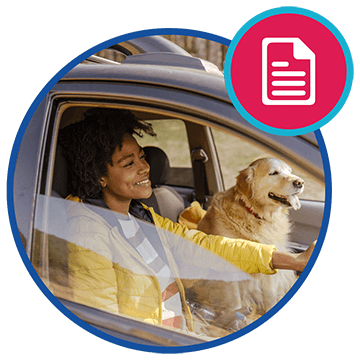It happens to the best of them. No car is going to last forever, as much as you would like it to. There comes a time when you have to replace them. Unfortunately, a lot of drivers tend to miss when that time is and keep a car hanging around for much, much longer than it should.
Not knowing when to replace your car can be a major mistake. First of all, the costs keep climbing and climbing as time goes on and it becomes less efficient. Even worse, as its condition worsens, it could be more prone to accidents, which could result in some serious costs.
Here, we’re going to look at some of the top signs that it’s time to replace your car, as well as the best way to go about it.
If a Repair is More Costly Than It’s Worth
The older a car gets; the more expensive repairs might be. Not only might it take more effort to fix parts that have suffered some serious wear and tear over the years, but some of the parts for replacements might not be as widely available as they used to be. If your car is worth around $1500 and a repair costs you $1600, then you should consider simply selling or getting rid of it for a new one, instead.
Those Costs Keep Creeping Up
Even if no (one) repair exceeds the total value of the vehicle, the piling costs might eventually add up to make the vehicle more expensive to own than it’s worth. You have your regular maintenance and small repairs to consider, but you should also consider fuel economy. As the engine gets less efficient, you’re likely to need to fuel up more regularly. There’s also your insurance to consider. If an aging car sees your premiums going up year after year, it might be time to look at a more affordable option.
It No Longer Meets Your Needs
We all change over time, as do our lives. Just like we might not fit a sweater we used to love; a perfectly adequate car can still be worth trading in if it doesn’t fit your lifestyle anymore. Perhaps your car is on the smaller end, but your family is growing bigger and, thus, you need more space. Or you could be taking a longer commute out of town and you need a vehicle that has a good fuel economy on the highway. If you feel like your car simply doesn’t fit your lifestyle anymore, it’s worth knowing that your local used car dealership likely has a much better match.
You’ve Stopped Taking Care of It
If you don’t take the time to investigate every new dent, scratch or crack in the glass, then it’s a sign you’re used to a car that’s so dilapidated, you simply expect it to have new problems. A new car could offer you a little pride in your car ownership once more. The same goes if your recent method of repair has become using scotch tape and your idea of a clean is driving it through the rain. If you simply don’t care anymore about your car’s upkeep, then it’s probably because the car isn’t worth keeping around anymore.
You Feel Unsafe in It
Older cars tend to be less safe than their newer counterparts. Not only are there all kinds of revolutions in safety technology, such as backup cameras, collision warnings, and lane assist as standard in many newer vehicles. Collision standards, how much a car can withstand, have become stricter, so newer cars are built to better handle accidents. Furthermore, the older a car is, the more likely it is to have some problems lingering under the hood that could lead to an accident. If you feel unsafe in your vehicle at all, then it’s time to consider giving yourself some peace of mind.
You’ve Taken it Over 100,000 Miles
When your odometer reaches over six digits, then that’s a clear sign that you’ve driven your car more than it was likely ever intended to be driven. For one thing, it’s a sign that you’re a very responsible driver who knows how to take care of your vehicle. However, it’s also time to do a little research and see whether it’s likely to go another 100k miles or more like another 1k. The more you drive, the more costly you can expect repairs and maintenance to be.
It Doesn’t Pass Emissions Tests
All older cars are going to have that one failed test. When that happens, you have two choices. You can either say goodbye to it or you can pay over the nose to have new technology installed so that your car is a cleaner drive. If you’re truly in love with your vintage vehicle, this might be considered a worthwhile investment. In most, cases, however, it’s little more than wasting money that could be spent on a new vehicle. Simply put, most modern cars have drive-clean technologies already fit in them, so they’re way more convenient to own.
So, What’s the Best Way to Replace a Vehicle ASAP?
If your car is well past its best years and it’s costing you more than it should to simply own and drive the thing, then you might not want to wait around for too long to replace it. Instead, start looking for a replacement online and at your local used car dealership in Saskatoon for your next ride.
Buying used is immediately more accessible. Not only is it cheaper to purchase a car outright and, thus, easier to save up enough to afford it, but you can finance a new purchase more easily and with less up-front than you would with a new car.
When buying a new car, your first decision is whether you buy from a dealership or a private seller. They both have their pros and cons. Private sellers don’t have a profit incentive, so they’re likely to accept a lower overall price for the car. However, they don’t have the certification nor the public reputation as a well-established dealership and you could be at greater risk of buying a car that’s not everything it’s promised to be.
Regardless of how you buy, take the time to ensure that you know exactly what you’re getting. Take it for an extensive test drive to make sure the steering, brakes, suspension and acceleration all work as they should. Have a mechanic take a closer look to alleviate any concerns. Take the VIN and have it run through Carfax Canada’s database to ensure that there are no problems that could get in the way of the sale.
Out With the Old
Naturally, you might need to make a little more space in your garage or driveway before you’re able to welcome your new car home, as well. With that in mind, you need to think about how you’re going to get rid of the old car.
- Trade it in: Depending on the condition of the car, this might be harder than it looks. However, your local used car dealership in Saskatoon, Saskatchewan might just be willing to help take it and offer your hands for some money in return. All the better for buying a new one.
- Consign it: If you take your car to a consignment lot, they can get rid of it much more easily for you than trying to sell it yourself. Effectively, you drive it to the lot, park it where told, and the lot owner will keep it and sell it for you. They get paid a commission, so you’re not going to get as much in return for the sale, but it requires very little work.
- Sell it privately: You can try selling on social media or in online ads as well. It’s wise to be upfront and honest about its condition and any issues it has. You might not get as much as you would from a dealership, but you will almost always find a willing buyer.
- Sell it for parts: Get in touch with your local auto-recycling center and they might be able to make use of a car that won’t sell. Your parts may be more valuable than you think.
- Donate your car: This might not get you any money for your vehicle but donating can still be advantageous. Not only can you do some good, but you can get a receipt for tax purposes so you can make a deduction for however much the car was valued at when you gave it away.
Finding the Right Replacement
So, you’re ready to say goodbye to your old clunker, but you’re not quite certain which new ride is going to be your perfect match. Here are a few tips that can help you narrow it down:
Think About Your Needs:
Ask yourself a series of quick questions and note down the answers. These will help you narrow your choices by a significant degree: How many passengers do you need to carry? Do you drive mostly on the highway or in the city? Do you need an off-road vehicle? How important is fuel economy to you? Do you drive a stick or an automatic? Do you need an all-wheel drive? What are your must-have features? How much parking space do you need?
Decide On a Budget:
Figure out how much you can afford to reasonably spend on a car and be firm with that line. This includes not only the dollar value of the vehicle, but also how much you can expect to pay for running costs, such as insurance, gas, maintenance, and finance repayments.
Check a Class, Not Just a Car:
If you’ve narrowed your options down, you might find a car that perfectly fits your needs and your budget. If that’s the case, look beyond that one car and at the class of vehicle. You might find a more economical deal or a car that’s roughly the same in terms of practicality but offers better features, such as safety or infotainment systems.
Should you Buy or Lease?
When you find the perfect car for you, your next option is either to buy it or lease it. A lease is effectively a long-term rental and comes with some extra caveats that can take some of the hassles of car ownership. Each option has its pros and cons. Let’s break down the differences in a little more detail.
Leasing a car is an easy way to drive a more expensive vehicle than you would be able to buy, so you may be able to enjoy greater safety features, technological advancements, and even a more exciting drive. The vast majority of repairs and maintenance costs are going to be handled under the warranty, so you don’t have to worry as much. However, the ultimate downside is that you’re not going to own the car at the end of the agreement. As such, some people see leasing as little more than an expense without anything to show for it in the end.
With buying, your choices are more limited to what kind of car you can actually afford to own. However, ownership also means a lot more flexibility. You can update, upgrade and modify the car as you like, not to mention the fact that you can sell it when you need to. Leasing a car also tends to come with a mileage allowance that, if you cross it, you have to pay a penalty for. Buying a car doesn’t have it. In the end, it offers lower expenses on average, too.
Is It Time to Replace Your Car?
If any of the signs above sound familiar, then you’ve likely held onto your car for too long already. However, as they say, the best time to do something is yesterday, and the second-best time is today. See how much you could get for trading in, selling, or scrapping your car and check out your nearby used car dealership to see if you can find an affordable, reliable replacement.



